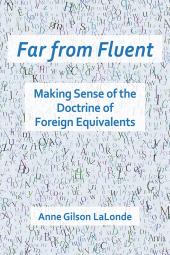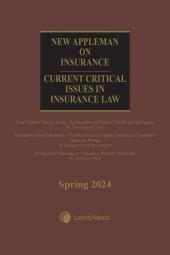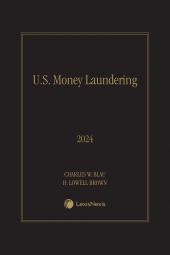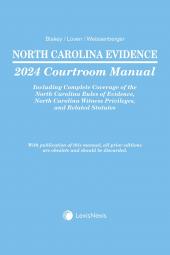Far From Fluent Making Sense of the Doctrine of Foreign Equivalents
Select a format
 International Order Inquiry
International Order Inquiry
Select subscription type
Terms & conditions
Subscribers receive the product(s) listed on the Order Form and any Updates made available during the annual subscription period. Shipping and handling fees are not included in the annual price.
Subscribers are advised of the number of Updates that were made to the particular publication the prior year. The number of Updates may vary due to developments in the law and other publishing issues, but subscribers may use this as a rough estimate of future shipments. Subscribers may call Customer Support at 800-833-9844 for additional information.
Subscribers may cancel this subscription by: calling Customer Support at 800-833-9844; emailing customer.support@lexisnexis.com; or returning the invoice marked "CANCEL".
If subscribers cancel within 30 days after the product is ordered or received and return the product at their expense, then they will receive a full credit of the price for the annual subscription.
If subscribers cancel between 31 and 60 days after the invoice date and return the product at their expense, then they will receive a 5/6th credit of the price for the annual subscription. No credit will be given for cancellations more than 60 days after the invoice date. To receive any credit, subscriber must return all product(s) shipped during the year at their expense within the applicable cancellation period listed above.
The total price includes the product(s) listed in the Order Form and any Updates for a limited period (minimum period of 30 days) after the order is placed ("Order Window"). Shipping and handling fees are not included in the grand total price.
All shipments may be returned, at subscribers' expense, for full credit of the Price within 30 days of receipt.
Shipments may not be returned, and no credits will be issued, more than 30 days after receipt.
After the Order Window, subscribers will receive notice of Updates along with the then-current grand total price and order process as Updates become available. Subscribers will only be shipped those Updates they specifically request.
Product description
View a sample of this title using the ReadNow feature
Understanding the trademark law doctrine of foreign equivalents can feel much like an English-language speaker attempting to decipher an article in Welsh: mind-numbing, frustrating, and confounding. This article aspires to be none of those.
This article will begin by showing how the doctrine works in the United States, both in litigation and in proceedings at the United States Patent and Trademark Office (USPTO), with plenty of examples. Then it will dig into the fundamentals of each element, pausing occasionally to wrestle with the doctrine’s assumptions, flaws, and inconsistencies. And it will provide a handy checklist of exceptions that prevent the doctrine from being applied.
eBooks, CDs, downloadable content, and software purchases are noncancelable, nonrefundable and nonreturnable. Click here for more information about LexisNexis eBooks. The eBook versions of this title may feature links to Lexis+® for further legal research options. A valid subscription to Lexis+® is required to access this content.
Table of contents
I. Introduction
II. Overview of the Doctrine
A. In General
B. Validity Analysis
i. Basic Principles
ii. Examples and Guidelines
iii. Rationales
C. Confusing Similarity Analysis
i. Basic Principles
ii. Examples and Guidelines
iii. Rationales
III. Nuts and Bolts of the Doctrine
A. Elements of the Doctrine
B. A Guideline, Not a Strict Rule
C. Contains a Foreign Word or Phrase
D. Literal, Direct Translation
i. Exact Equivalents
ii. Evidence of Translation
E. Common, Modern Language
i. Which Languages are Common and Modern, not Obscure and Dead?
ii. Critique and Confusion
a. Debatable Interpretations of Evidence
b. Failure to Meet “Appreciable Number” Standard
c. A Suggestion
F. Ordinary American Purchaser
i. Who is the Ordinary American Purchaser?
a. In General
b. In Cases Where the Mark May be Primarily Geographically Deceptively Misdescriptive
ii. Critique and Confusion
a. Incorrect Standard Quoted in TMEP, Case Law
b. What is the Relevant Group of Ordinary American Purchasers?
c. Must the Relevant Purchaser be Bilingual?
d. Relevance of Foreign Perception
G. “Stop and Translate”
i. When Would Someone “Stop and Translate”?
ii. Critique and Confusion
a. Explanation of Standard Unclear in Case Law
b. “Stop and Translate” is Not Appropriate in Validity Analysis
c. Do Consumers Really Stop . . . And Then Translate?
d. Foreign Terms May Simply Have Different Commercial Impressions than English Terms, Regardless of Translation
IV. Checklist of Exceptions to Applying Doctrine
A. Marketplace Context Suggests Purchasers Would Not Translate Foreign Term
B. Relevant English Translation is Imperfect or Ambiguous
C. Foreign Term is Not Grammatically Correct
D. Foreign Mark is in More Than One Language
E. Foreign Marks Being Compared to Each Other are in Different Languages
F. Foreign Marks Being Compared to Each Other are in the Same Foreign Language
G. Foreign Term Has Become an English Word or is Otherwise Known to English Speakers
H. Foreign Term is a Personal Name or Resembles One
I. Foreign Term and English Term Have Distinct Commercial Impressions
J. Foreign Term is in a Dead or “Highly Obscure” Language
K. Foreign Term is Obscure
L. Foreign Mark Closely Resembles an English Mark or a Descriptive/Generic Term
V. Conclusion
 Lexis Nexis
Lexis Nexis 


